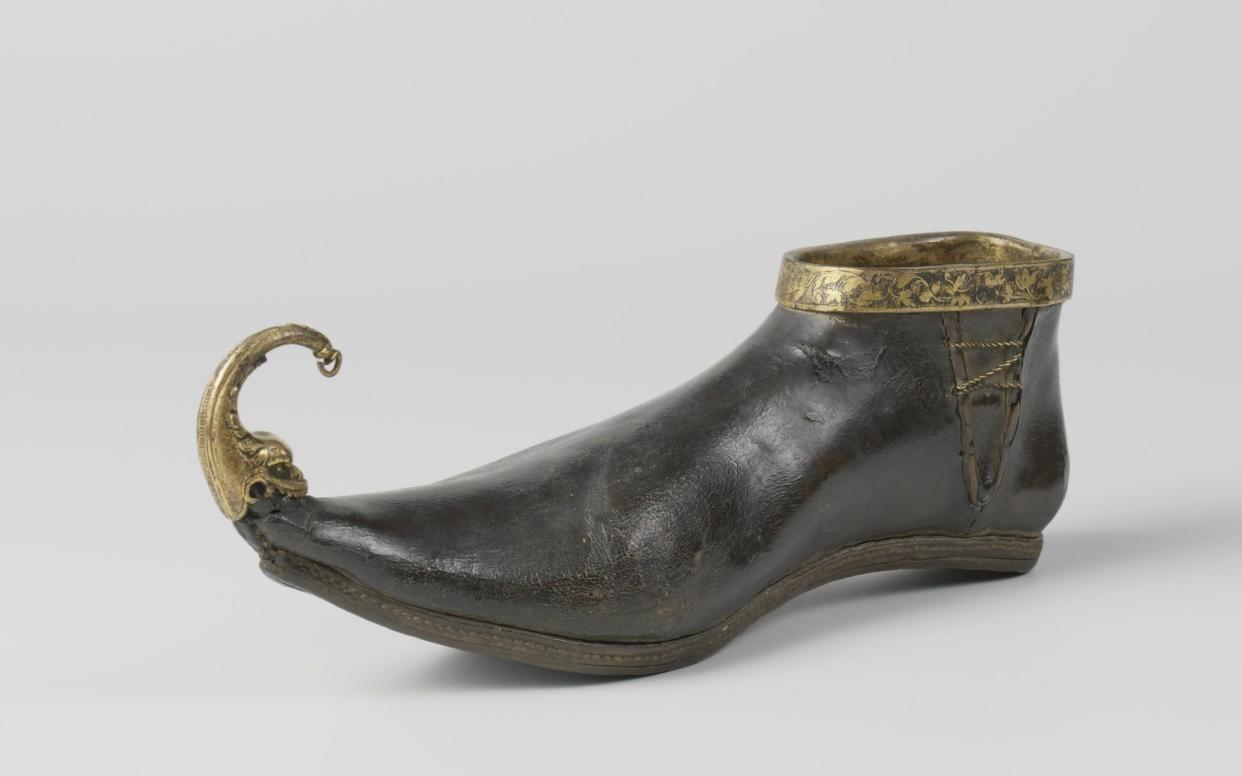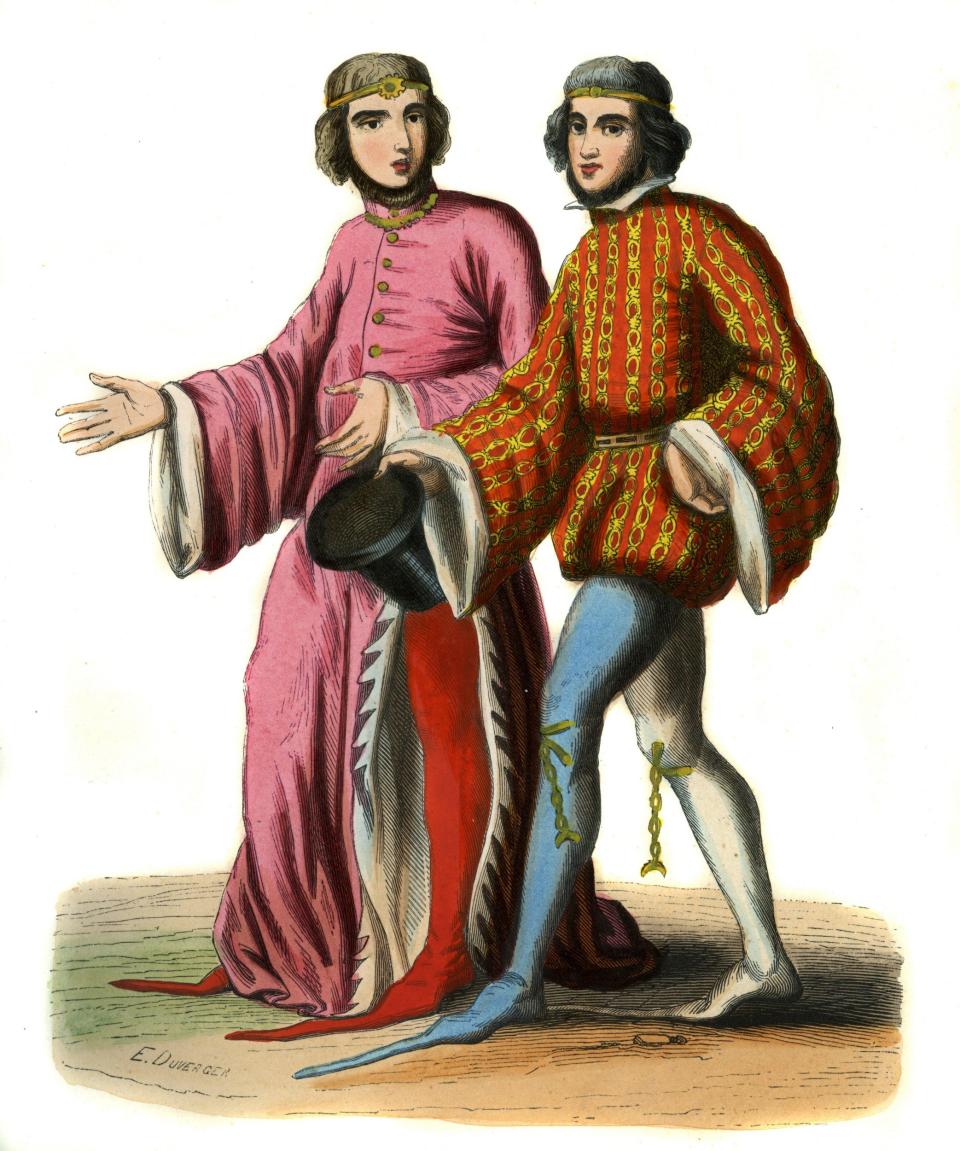Medieval winklepicker shoes inflicted bunions on fashionable 14th-century Britons, study finds

Medieval winklepickers unleashed plague of bunions among fashion-conscious 14th-century Britons, a Cambridge study has found.
Bunions or halluces valgi are bony lumps on the feet normally caused by constructive footwear, and often thought to be a modern problem.
Cambridge academics studying medieval skeletons across the city’s cemeteries found that 27% of the population in the 14th and 15th centuries had bunions, up from just 6% in preceding centuries.
The vogue for pointed footwear called poulaines or cracows inflicted bunions on a quarter of fashion-conscious Britons, according to the study, as the rise in cases of the foot complaint coincided with the craze for elongated shoes.

The wealthy suffered the most for their style, as more bunions were found among the skeletons of the urban elite than those in poor rural cemeteries, along with evidence of injuries consistent with falling over face first.
The study’s co-author Dr Piers Mitchell, from the University of Cambridge’s Department of Archaeology, said: “The 14th century brought an abundance of new styles of dress and footwear in a wide range of fabrics and colours. Among these fashion trends were pointed long-toed shoes.
“The remains of shoes excavated in places like London and Cambridge suggest that by the late 14th century almost every type of shoe was at least slightly pointed – a style common among both adults and children alike.”
“We investigated the changes that occurred between the high and late medieval periods, and realised that the increase in hallux valgus over time must have been due to the introduction of these new footwear styles.”
The study also revealed a predilection for the latest sartorial trends amongst the medieval priesthood, despite them being forbidden from wearing pointy shoes in 1215, with 43% of remains in the graves of clergymen showing signs of bunions.
Dr Mitchell said: “The adoption of fashionable garments by the clergy was so common it spurred criticism in contemporary literature, as seen in Chaucer’s depiction of the monk in the Canterbury Tales.”
“Rules for the attire of Augustinian friars included footwear that was... commensurate with a lifestyle of worship and poverty,” said Mitchell. “However, in the 13th and 14th centuries it was increasingly common for those in clerical orders in Britain to wear stylish clothes, a cause for concern among high-ranking church officials.”
As well as signs of bunions in Cambridge’s medieval population, academics also uncovered evidence of fractures consistent with injuries suffered by falling over and tumbling forward with outstretched arms, suggesting medieval footwear could be a serious health hazard.
High Medieval winklepickers became increasingly long, and the extremities of fashion were not viewed favourably by royalty, with poulaines banned in Paris by the French king Charles V in 1368.
Responding to even pointier footwear in 1463, English monarch Edward IV passed a law restricting the length of shoes.

